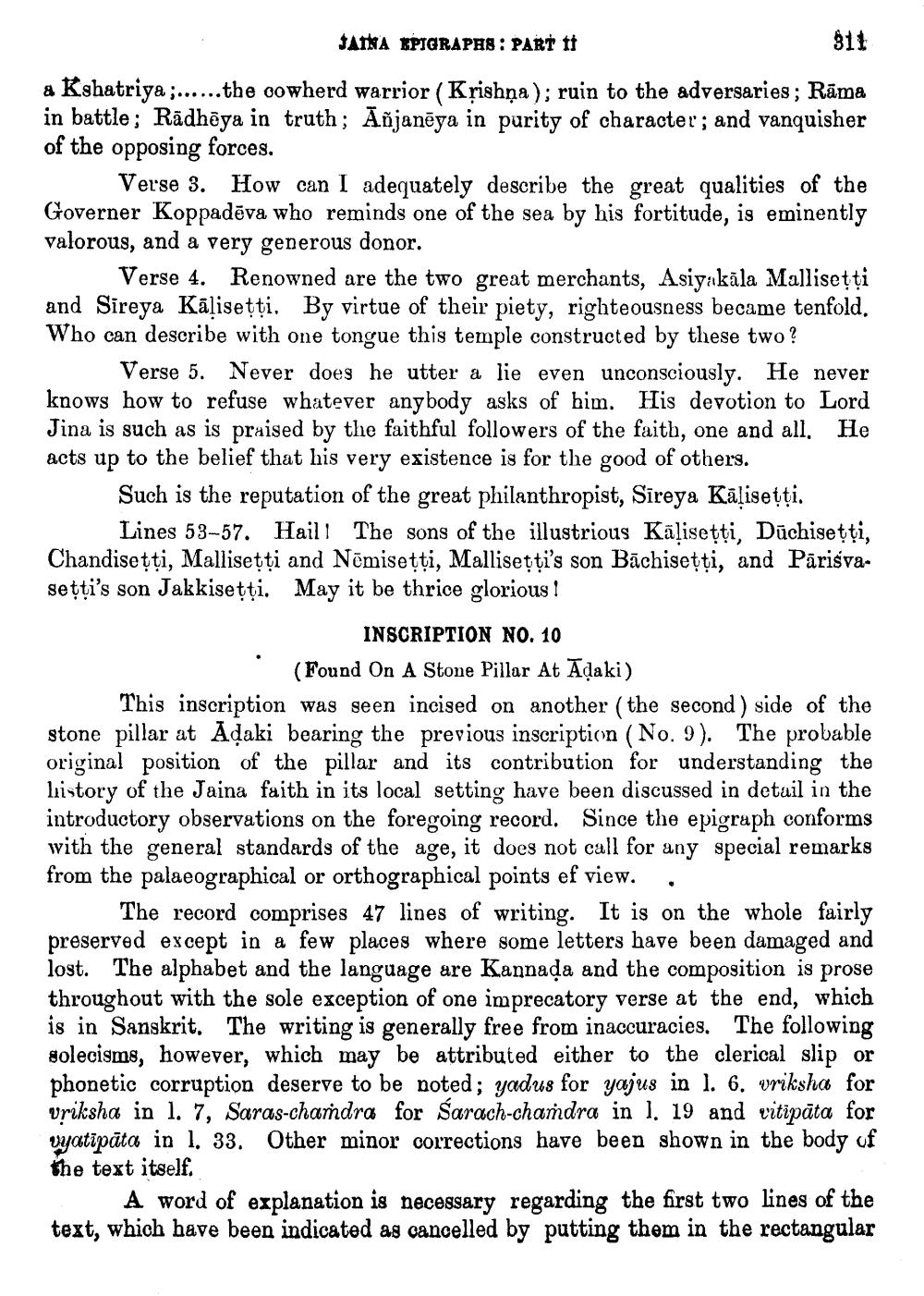________________
JAINA EPIGRAPHS : PART 1
$11
a Kshatriya ; ... ... the cowherd warrior (Krishna); ruin to the adversaries ; Rāma in battle; Rādhöya in truth; Añjanēya in purity of character; and vanquisher of the opposing forces.
Verse 3. How can I adequately describe the great qualities of the Governer Koppadēva who reminds one of the sea by his fortitude, is eminently valorous, and a very generous donor.
Verse 4. Renowned are the two great merchants, Asiyakāla Mallisetti and Sireya Kālisetti. By virtue of their piety, righteousness became tenfold. Who can describe with one tongue this temple constructed by these two ?
Verse 5. Never does he utter a lie even unconsciously. He never knows how to refuse whatever anybody asks of him. His devotion to Lord Jina is such as is praised by the faithful followers of the faith, one and all. He acts up to the belief that his very existence is for the good of others.
Such is the reputation of the great philanthropist, Sīreya Kālisetti.
Lines 53-57. Hail! The sons of the illustrious Kālisetti, Dūchisetti, Chandisetti, Mallisetti and Nēmisetti, Mallisetti's son Băchisetti, and Pārisva. setti's son Jakkisețți. May it be thrice glorious !
INSCRIPTION NO. 10
(Found On A Stone Pillar At Ādaki) This inscription was seen incised on another (the second) side of the stone pillar at Adaki bearing the previous inscription (No. 9). The probable original position of the pillar and its contribution for understanding the history of the Jaina faith in its local setting have been discussed in detail i introductory observations on the foregoing record. Since the epigraph conforms with the general standards of the age, it does not call for any special remarks from the palaeographical or orthographical points ef view. .
The record comprises 47 lines of writing. It is on the whole fairly preserved except in a few places where some letters have been damaged and lost. The alphabet and the language are Kannada and the composition is prose throughout with the sole exception of one imprecatory verse at the end, which is in Sanskrit. The writing is generally free from inaccuracies. The following solecisms, however, which may be attributed either to the clerical slip or phonetic corruption deserve to be noted; yadus for yajus in l. 6. vriksha for vriksha in l. 7, Saras-chandra for Sarach-chandra in l. 19 and vitipāta for vyatīpāto in l. 33. Other minor corrections have been shown in the body of the text itself.
A word of explanation is necessary regarding the first two lines of the text, which have been indicated as cancelled by putting them in the rectangular




